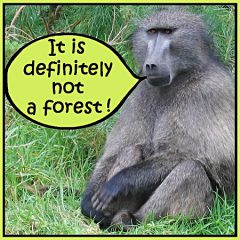For many years there has been an on-going debate over the need for the outdated ‘forest’ definition of the UN FAO (Food and Agriculture Organisation) to be revised, mainly because it has failed to recognise that tree plantations cannot be truthfully classified as a ‘type of forest’. This has been made worse by the insistence of the FAO and other UN agencies in giving other confusing or even misleading names to tree plantations, like “planted forests”, “forest plantations”, “plantation forests”, “afforestation”, “reforestation”, and even “forestry”, when not one of these terms can accurately describe cultivated single-species, even-aged, industrial tree mono-cultures!
However, up till now there has not been a meaningful response from the FAO, and this has caused considerable frustration to those people who see that calling tree plantations ‘forests’ has many negative impacts, leading to increased plantation expansion – certified by the Forest Stewardship Council (FSC) as “responsibly managed forests” – while allowing real forests to be destroyed and replaced with tree plantations. For the FAO’s purposes, any bunch of trees, whether part of a richly biodiverse old-growth forest, or a plantation of invasive pine or eucalyptus trees that has caused the destruction of rare grassland or other natural vegetation including real forests, or even smallholder farms, are considered to be of equal value. All that really matters it seems, is that the trees represent either a source of timber, in order to satisfy further demand for wasteful consumption, or a place where carbon can be stored in order to absorb a small part of the climate-disrupting greenhouse gas emissions produced through excessive industrial production.
What this represents is the commodification and conversion of forests into a form of ‘natural capital’ that can be systematically appropriated, controlled and traded by corporate entities through a variety of methods, including REDD+ schemes and land-grabbing. A perverse effect of the FAO ‘anything goes’ definition is that ecosystems are now viewed as ‘forest landscapes’ where ecologically destructive tree plantations are allowed to become the dominant land use, because they are considered to be ‘a type of forest’ in the narrow view of those whose interests are served by allowing this situation.

The above image shows a patch of peat-swamp forest in the Port Durnford Forest Reserve in South Africa ‘biting the dust’ after being systematically encroached into, and dried out by Eucalyptus pulpwood plantations, which are nevertheless, still certified by the FSC as “responsibly managed forests”.
Because past demands for a revision of the existing ‘forest’ definition have fallen upon deaf ears at the FAO, a different approach has now been adopted, calling for the adoption of a separate set of definitions for tree plantations. On December 9th 2016, at the onset of COP 13 of the Convention on Biological Diversity (CBD) an open letter to the CBD Secretariat was released and widely circulated. The letter can be viewed here:
https://plantationdefinitiondiscussion.wordpress.com/2016/12/19/open-letter-tree-plantations-must-be-defined-separately-from-forests/


